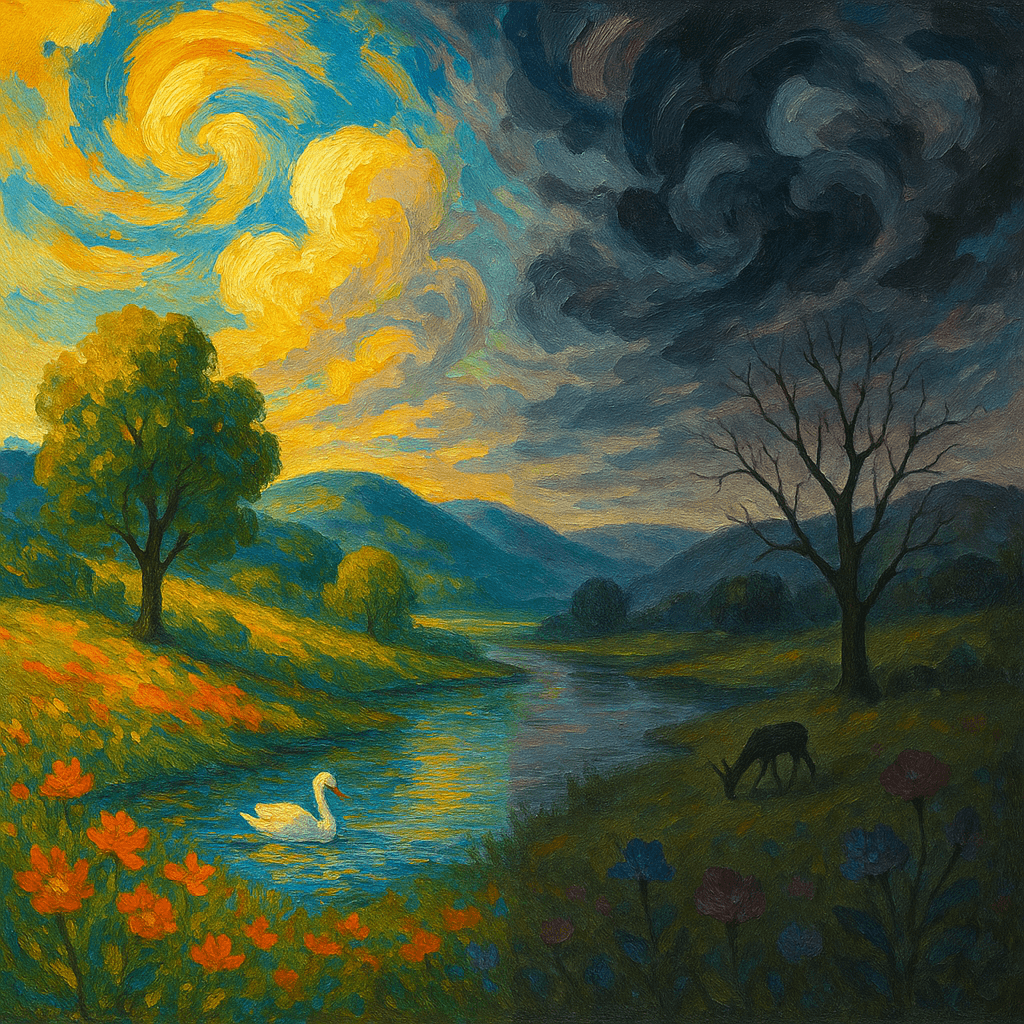The Emotional Palette: Colors as Reflections of Feeling

Colors, like features, follow the changes of the emotions. — Pablo Picasso
Picasso’s Insight into Color and Emotion
Pablo Picasso’s statement that “Colors, like features, follow the changes of the emotions” draws attention to the profound relationship between visual art and inner experience. With this observation, he implies that just as our facial expressions reflect our mood, so too do the hues we gravitate toward or depict in art. This understanding sets the foundation for exploring how colors serve as a visual language for the spectrum of human emotion.
Historical Use of Color Symbolism
Throughout art history, artists have harnessed color to represent and evoke emotion. For instance, in the medieval era, colors like blue symbolized spirituality and serenity, while red was linked to passion and intensity. The Renaissance further advanced color theory, as seen in the works of Titian, who used warm palettes to evoke sensuality. Thus, Picasso’s view resonates with a centuries-old tradition of connecting the psychology of color to human feeling.
Picasso’s Blue and Rose Periods
Delving into Picasso’s own body of work, we notice a striking manifestation of his philosophy during his Blue and Rose Periods (1901–1907). In moments of sorrow, Picasso’s canvases were dominated by cool blues and muted tones, conveying melancholy and despair—as in ‘La Vie’ (1903). Later, his transition to warmer, pinkish hues aligned with a more hopeful and tender emotional state. This artistic evolution exemplifies how an artist's palette can serve as a barometer for their evolving emotions.
Contemporary Psychology and Color Theory
Modern research corroborates Picasso’s intuition. Psychologists such as Eva Heller have shown in studies like ‘Psychology of Color’ (2000) that colors can reliably influence and express human mood. Warm colors like red and yellow are found to energize or evoke happiness, whereas cooler shades correlate with calm or sadness. This scientific perspective bridges the gap between artistic intuition and measurable emotional responses, reinforcing the universality of Picasso’s statement.
Color in Everyday Expression
Finally, the interplay between emotion and color extends beyond the realm of fine art into daily life. People choose clothing, design spaces, and create objects with colors that align with their feelings or desired mood—think of dressing in vibrant hues for celebration or softer tones for solace. The language of color—such as feeling ‘blue’ or being ‘in the pink’—permeates conversation, underscoring our collective understanding that, as Picasso asserted, colors truly mirror our internal landscapes.